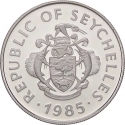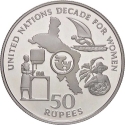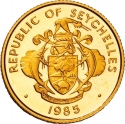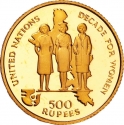You are about to finish your registration. Please check your mailbox (including spam folder). There should be a letter with a confirmation link. Check setting to make sure that your e-mail address is correct.
Send letter againDescription
The United Nations Decade for Women, spanning from 1975 to 1985, centered on addressing policies and issues affecting women, including pay equity, gender-based violence, land ownership, and various human rights concerns. It was endorsed on December 15, 1975, by the United Nations General Assembly through Resolution 31/136.
The Decade officially comprised three global gatherings and conferences in Mexico City, focusing on "consciousness raising," Copenhagen, emphasizing the establishment of "networks," and Nairobi, fostering "the solidarity of women worldwide." Additionally, numerous regional meetings were conducted in collaboration with specific UN agencies (UNESCO, WHO, ECLA, EEC) and non-governmental organizations (YWCA, World Council of Churches, National Association of Women).
The Yemen Arab Republic (YAR), also known simply as North Yemen or Yemen (Sanaʽa), was a country from 1962 to 1990 in the northwestern part of what is now Yemen. Its capital was at Sanaʽa. It united with the People's Democratic Republic of Yemen (commonly known as South Yemen) on May 22, 1990 to form the current Republic of Yemen.
Obverse
_Rials_25/1985_06.05.2024_22.38-60.jpg)
|
Depicts the coat of arms of the Yemen Arab Republic (1974–1990) encircled by a a garland of vine and leaves surrounded by the inscription "Central Bank of Yemen" in Arabic above and dates below. البنك المركزي اليمني |
|---|---|
Reverse
_Rials_25/1985_06.05.2024_22.38_01-60.jpg)
|
Depicts three women in various categories - the first modern woman carrying a book, villages, rural and urban areas women behind encircled by the inscription above and denomination below, the symbol of the Decade by Valerie Pettis (a combination of a stylized dove and the biological symbol of femininity) left. عشر سنوات لهيئة الأمم المتحدة للمرأة |
| Edge |
_Rials_25/1985_06.05.2024_22.38.jpg)
_Rials_25/1985_06.05.2024_22.38_01.jpg)





